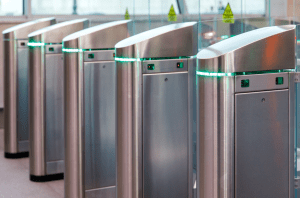Top Ten Security Guidelines
03 May, 2021
Below we list CPNI’s Top Ten Security Guidelines when protecting against Terrorism.
1. Conduct a Risk Assessment
Conduct a risk assessment to decide on the threats the organisation might face and their likelihood. Identify existing and potential vulnerabilities and the impact of any breaches of security.
2. Consider Security Requirements
If acquiring or extending premises, consider security requirements right from the planning stage. It will be cheaper and more effective than adding measures later.
3. Make security awareness a part of the organisation’s culture
Make security awareness a part of the organisation’s culture. Ensure staff are kept regularly informed and that security standards are fully supported at a senior level.
4. Ensure good basic housekeeping
Ensure good basic housekeeping throughout the premises. Keep public areas tidy and well-lit, remove unnecessary furniture and keep garden areas clear.
5. Keep access points to a minimum
Keep access points to a minimum and issue staff and visitors with passes. Where possible, do not allow unauthorised vehicles close to the building.
6. Install appropriate physical measures
Install appropriate physical measures such as locks, alarms, CCTV surveillance, complementary lighting and glazing protection.
7. Maintain appropriate mail-handling procedures
Maintain appropriate mail-handling procedures, consider establishing the mailroom away from the main premises.
8. Check identities and follow up references
When recruiting staff or contractors, check identities and follow up references.
9. Take proper IT security precautions
Consider how best to protect information and take proper IT security precautions. Ensure there are appropriate provisions for disposing of confidential waste.
10. Plan and rehearse business continuity and incident response plans
Plan and rehearse business continuity and incident response plans, make sure that key business functions can continue during disruptions.
Read CPNI’s full guidelines here.
We are open to questions and discussion with our customers and audience about physical security. If you have any questions, let us know
Follow us on LinkedIn for our latest updates.












